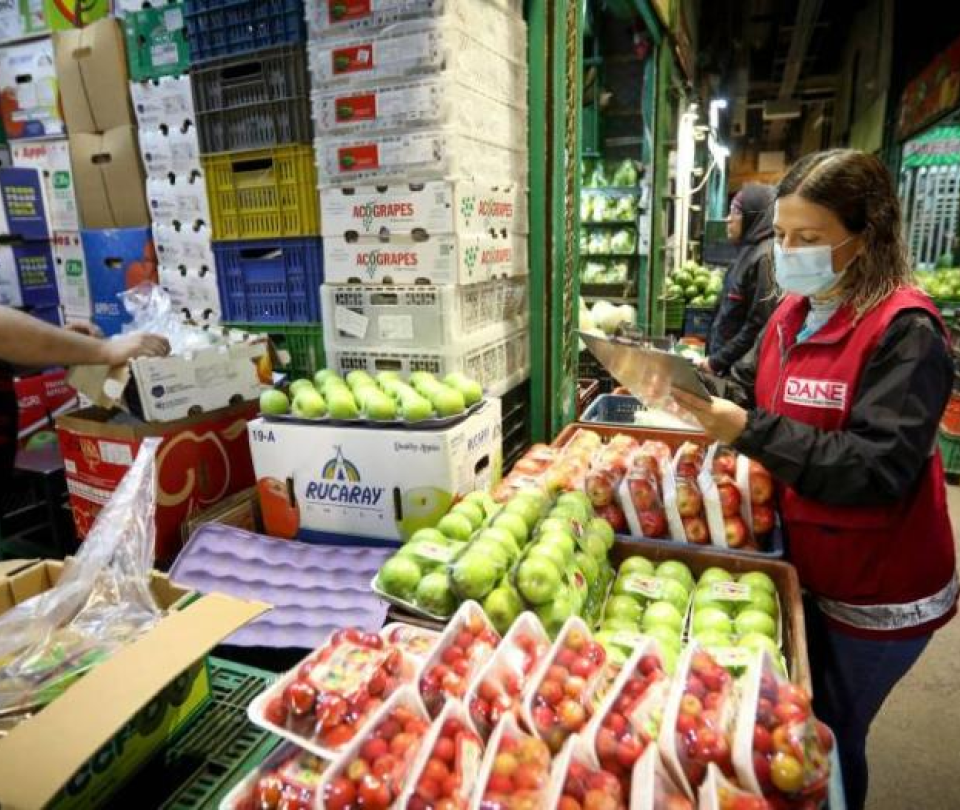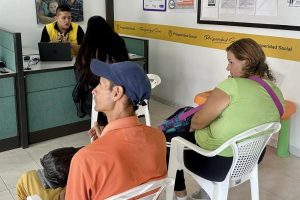The Dane delivered the inflation figures for April, and the indicator showed, after almost two years of an upward trend, a break. The annual figure showed a reduction and it fell from 13.34% in March to 12.82% for the fourth month of the year. However, it is worth remembering that this figure continues to represent a level not seen 23 years ago.
(See: According to the Ministry of Finance, the interest rate hike cycle has ended).
The monthly variation in the prices of the Consumer Price Index (CPI) was 0.78%, lower than the figure of 1.25% that was presented in the same month of 2022.
“What contributed the most to inflation during the month was accommodation, water, electricity and gas, and in this component rents are particularly the ones that are contributing the most, with 0.35 points, almost half of the month’s inflation”, explained the director of Dane, Piedad Urdinola.
(See: Inflation: public services fell and rents continue to rise).
According to Sergio Olarte, chief economist at Scotiabank Colpatria, what caused annual inflation to drop is precisely what has recently made the indicator go up and up: food.
“For the first time since June 2021, food had a slightly negative variation of 0.07% and that brought annual food inflation down to less than 19%. It is still very high, but let’s remember that last year it reached almost 28%, that is, it has dropped almost 10 percentage points”, said the economist.
Additionally, according to Olarte, Regulated ones such as electricity, gas, and water also began to slow down slightly.
From Bancolombia’s Economic, Sectoral and Market Research Department, it was mentioned that despite the bearish signals that were anticipated, the food data surprised downwards.
(See: Inflation: food fell for the first time since June 2021).
“The positive result in the food item would have been explained by the better context in costs and the better climate scenario. In costs, the key was the fall for the fourteenth consecutive month in the annual variation of the food PPI thanks to the fact that in April it had a strong monthly decline of 4.34%”, indicated the entity.
On the other hand, from BBVA Research it is expected that food inflation will maintain a good rate of deceleration in the coming months, “although some risks associated with logistics and fuel prices may materialize”, explained Laura Peña, BBVA Research economist for Colombia.
According to the economist, for her part, core inflation could continue to accelerate for a few more months. Peña also highlighted that core inflation (excluding food) continued to rise in annual terms, but at a slower pace, by increasing 9 basis points and settling at 11.51%.
“Within this, the regulated basket registered the greatest increase, reaching 15.3% per year, driven by increases in fuel and an increase in water and electricity rates.Pena pointed out.
(See: This is how Petro reacted to the drop in inflation in Colombia).
Banco Itaú’s economic analysis team highlighted that in April inflation surprised downwards and decreased in annual terms.
“Given that inflation has peaked, and that inflation expectations are likely to continue to be corrected downwards, we expect the Board of Directors of Banco de la República to maintain the monetary policy rate at 13.25% in the next meetings”, mentioned the entity.
LAURA LUCIA BECERRA ELEJALDE
Journalist Portfolio





![[Img #74683]](https://thelatestnews.world/wp-content/uploads/2024/12/The-main-mistakes-to-avoid-when-betting-on-electronic-sports-150x150.jpg)









